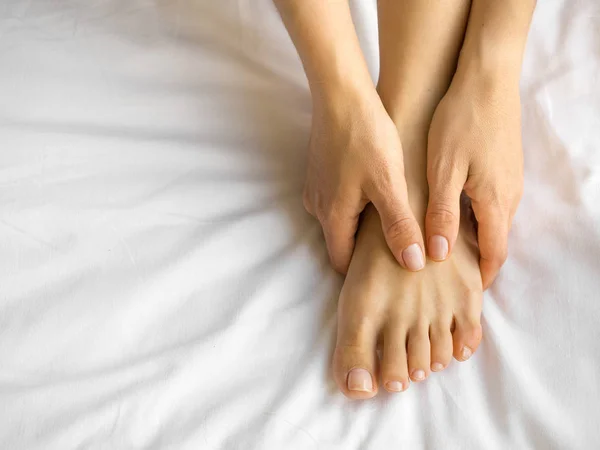Why Do My Feet Hurt in the Morning? Waking up to a sharp pain in your feet can be a distressing experience, often making the simple act of getting out of bed feel daunting. Many people ask, “Why do my feet hurt when I wake up and walk?” This discomfort can stem from various underlying conditions, with plantar fasciitis being one of the most common culprits. Understanding the causes of this pain and incorporating effective stretches into your morning routine can significantly alleviate your discomfort.

Common Causes of Foot Pain Upon Waking
The pain you feel when stepping out of bed is often linked to the plantar fascia, a thick ligament that runs across the bottom of your foot. When you sleep, this ligament can tighten, leading to sharp pain during your first steps in the morning. Here are some primary reasons for this discomfort:
- Plantar Fasciitis: This condition is characterized by inflammation of the plantar fascia, typically causing severe heel pain that is most noticeable within the first few steps after waking or after prolonged periods of inactivity. Factors contributing to plantar fasciitis include overuse, flat feet, high arches, and improper footwear.
- Tight Calf Muscles: Limited flexibility in the calf muscles can affect the tension on the plantar fascia. When these muscles are tight, they can contribute to increased strain on the foot ligaments.
- Excess Weight: Carrying extra weight places additional stress on your feet, which can exacerbate conditions like plantar fasciitis and lead to overall discomfort.
- Poor Footwear: Shoes that lack proper support or cushioning can lead to foot pain. This is especially true for individuals who spend long hours standing or walking.
- Age: As we age, our body’s tissues lose elasticity, making older adults more susceptible to foot pain.
Recognizing these causes is crucial for addressing morning foot pain effectively.
The Best Stretches to Alleviate Morning Foot Pain
Incorporating specific stretches into your routine can help relieve tension in your feet and calves, ultimately reducing morning pain. Here are some effective stretches recommended by physical therapists:

1. Calf Stretch
Stand facing a wall with your hands pressed against it. Step one foot back while keeping it straight and bend your front knee. Lean into the wall until you feel a stretch in your back calf. Hold for 15-30 seconds and switch sides.
2. Plantar Fascia Stretch
While seated, cross one leg over the other and pull back on your toes with your hand to stretch the arch of your foot. Hold for 15-30 seconds before switching legs.
3. Towel Stretch
Sit on the floor with your legs extended in front of you. Loop a towel around the ball of one foot and gently pull it towards you while keeping your knee straight. Hold for 15-30 seconds before switching sides.
4. Golf Ball Roll
While seated, place a golf ball or a frozen water bottle under your foot and roll it back and forth for several minutes. This massage helps relieve tension in the plantar fascia and improves blood flow.
5. Toe Taps
While seated or standing, lift your toes while keeping your heels on the ground, then tap them back down. Repeat this motion for several repetitions to strengthen small muscles in the feet.
6. Heel Raises
Stand upright and slowly raise your heels off the ground so that you are standing on your toes. Hold for a moment before lowering back down. Repeat this exercise 10-15 times to strengthen calf muscles and improve balance.
Incorporating these stretches into your morning routine can enhance flexibility and reduce discomfort associated with morning foot pain.
Conclusion
Experiencing foot pain upon waking can significantly impact daily activities and overall quality of life. By understanding common causes such as plantar fasciitis and tight calf muscles, individuals can take proactive steps toward relief through targeted stretching exercises. If symptoms persist despite self-care measures, consulting with a healthcare professional or physical therapist may provide further insights and tailored treatment options to ensure healthier mornings ahead.
Also Read | How to Sleep Better with Sciatica: 5 Essential Tips
Content source – www.soundhealthandlastingwealth.com

